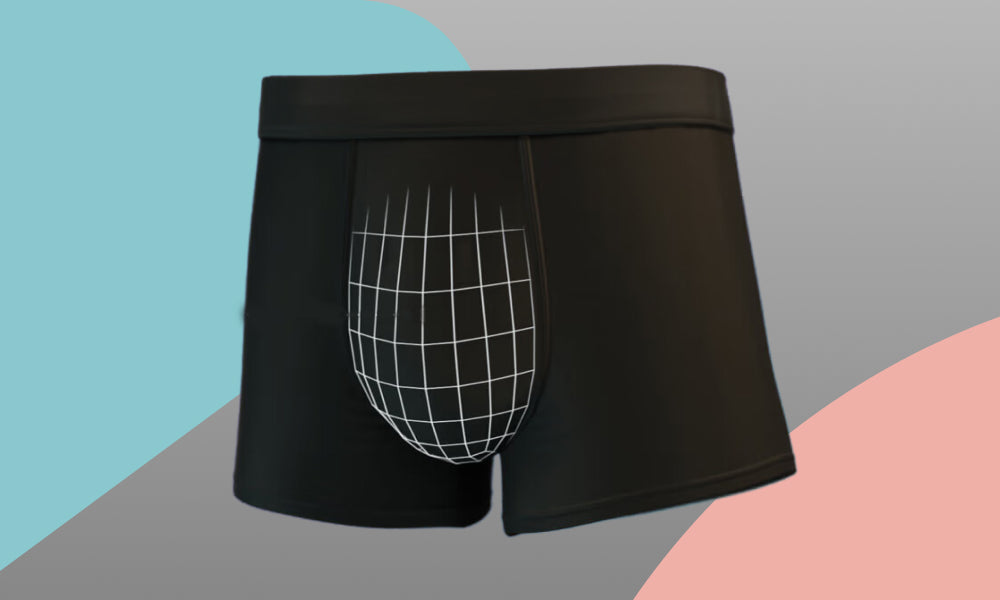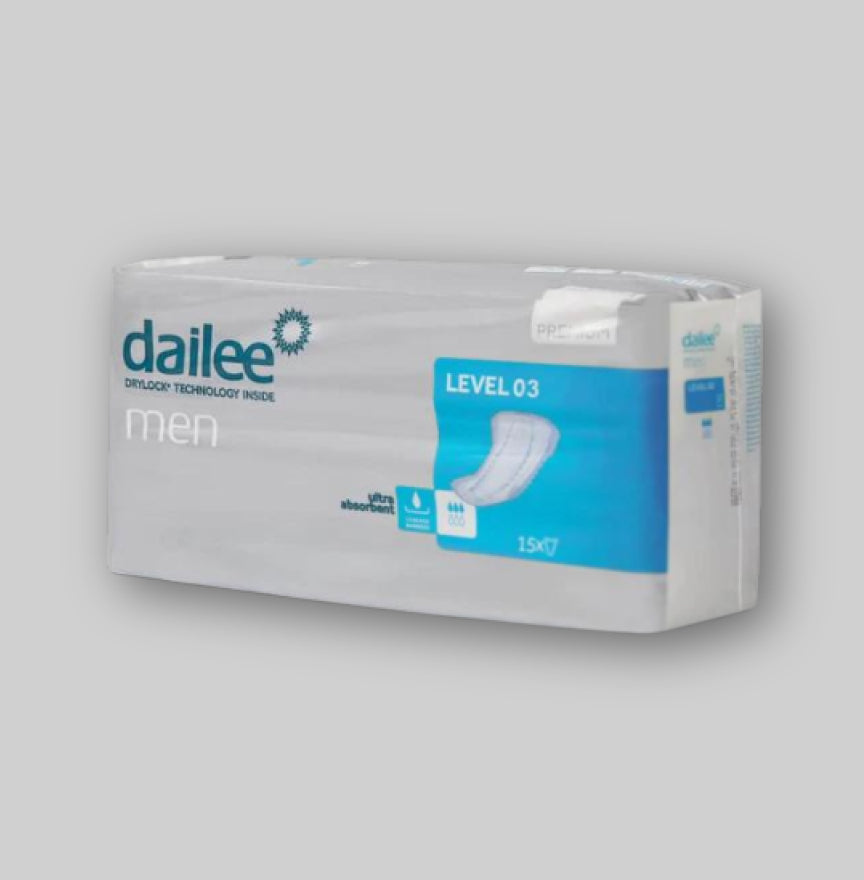People with urinary incontinence or bladder weakness often need help from their caregivers to cope. As a caregiver, it is important to know how to support someone with incontinence and how to provide the right care. This article provides some tips on how to care for someone with urinary incontinence or bladder weakness.
Incontinence can have various causes , such as a weakened pelvic floor, a neurological condition or a side effect of medication. It is important to determine the cause of incontinence and to tailor the care accordingly. Good communication between the caregiver, the person with incontinence and the caregiver is essential.
As a caregiver, you can also help reduce incontinence by encouraging the person to drink enough and go to the toilet regularly. In addition, there are various aids available, such as incontinence products and toilet raisers, which can make the daily life of someone with incontinence easier.
Understanding Urinary Incontinence or Loss of Urine
Definition and types
Incontinence refers to the inability to hold urine, which can lead to involuntary urine leakage. This can range from an occasional leak to a complete loss of bladder control. There are several types of incontinence , including stress incontinence , urge incontinence , mixed incontinence, and overflow incontinence .
Stress incontinence occurs when the pelvic floor and bladder sphincter muscles are weakened. This can happen as a result of pregnancy, childbirth, menopause, obesity, surgery, or other factors that weaken the pelvic floor muscles. Urge incontinence is a sudden and intense urge to urinate, followed by an involuntary loss of urine. Mixed incontinence is a combination of stress incontinence and urge incontinence, while overflow incontinence occurs when the bladder cannot empty completely and urine leaks in dribs and drabs.
Causes of incontinence
There are several causes of incontinence, including age, pregnancy, childbirth, menopause, obesity, chronic cough, neurological conditions, bladder or prostate problems, and certain medications. In women, childbearing and menopause can weaken the pelvic floor muscles, which can lead to incontinence. In men, an enlarged prostate or prostate cancer can lead to incontinence.
It is important to understand that incontinence is a common problem and that there are several treatment options available to help relieve symptoms. It is advisable to consult a doctor for proper diagnosis and treatment.
First steps in care
When someone experiences incontinence, it is important to provide the right care. Below are the first steps to take when caring for someone with urine leakage or incontinence.
Medical evaluation
The first step in caring for someone with incontinence is to undergo a medical evaluation. This may be done by a primary care physician or a specialist. During this evaluation, the healthcare provider will ask about the person’s symptoms, medical history, and any medications they are taking. They may also perform a physical exam and a urine test.
Drawing up a care plan
After the medical evaluation, it is important to create a care plan. This plan should be created in consultation with the healthcare provider and the person experiencing incontinence. The care plan should include the following:
- The frequency of changing incontinence products
- Which incontinence material should be used
- How to apply the incontinence material
- How the person can order or obtain incontinence supplies
- What medication may be needed
- Any changes in diet or lifestyle
It is important that the care plan is regularly reviewed and adjusted if necessary to ensure that the person receives the best possible care.
Daily care practices
Hygiene
One of the most important aspects of daily care practices for someone with urine leakage or incontinence is hygiene. It is important to keep the skin clean and dry to prevent irritation and infection. Here are some tips:
- Use soft cloths or washcloths to clean the skin. Avoid harsh or perfumed products that can irritate the skin.
- Wash skin with lukewarm water and mild soap. Avoid hot water and harsh soaps that can dry out the skin.
- Dry skin thoroughly with a soft towel. Pat skin dry gently, do not rub.
- If necessary, use an ointment or cream to protect and moisturize the skin.
Comfort and dignity
In addition to hygiene, it is important to ensure comfort and dignity in the daily care practices of someone with urine loss or incontinence. Here are some tips:
- Wear comfortable clothing that is easy to put on and take off. Avoid tight clothing that can irritate the skin.
- Use incontinence products that suit individual needs and ensure they are properly secured. This can help prevent leakage and reduce discomfort.
- Respect the person's privacy and ask permission before starting daily care practices.
Using tools
There are several tools that can help with the daily care practices of someone with urine loss or incontinence. Here are some examples:
- Incontinence products, such as diapers and panty liners , can help prevent leakage and reduce the feeling of discomfort.
- Bed protectors and mattress protectors can help keep the bed clean and dry.
- Toilet seat raisers and grab bars can help make using the toilet easier and safer.
It is important to consult with a healthcare provider to determine which aids are best suited to individual needs.
Dealing with challenges
Emotional support
When someone in your care experiences urine leakage or incontinence, it can take an emotional toll. It can lead to feelings of embarrassment, frustration, and discomfort. It is important to remember that this is a common problem and that there are ways to manage it.
One of the most important things you can do is support and encourage your loved one. Listen to their concerns and give them space to express their emotions. Encourage them to seek professional help and encourage them to stay active and participate in activities they enjoy.
Practical tips in case of accidents
Coping with accidents due to urine leakage or incontinence can be difficult. Here are some practical tips to help you:
- Always keep a spare set of clothes on hand so your loved one can change after an accident.
- Use incontinence products that are appropriate for your loved one's level of incontinence. There are several types available, including disposable and washable options.
- Use waterproof protection on mattresses and chairs to prevent damage.
- Help your loved one go to the toilet regularly to prevent accidents.
- Maintain good hygiene to prevent infections.
By following these practical tips and supporting your loved one, you can work together to manage urine leakage or incontinence and the challenges it brings.
Lifestyle changes
Diet and fluid intake
A healthy diet and adequate fluid intake are important for people with bladder weakness or incontinence. A diet rich in fiber can help prevent constipation, which can lead to bladder weakness. It is also important to drink enough water to prevent dehydration, but it is also important to reduce your intake of caffeine and alcohol , as these substances can irritate the bladder and cause bladder weakness.
Bladder training
Bladder training can also help with urine leakage or incontinence. The goal of bladder training is to train the bladder to empty at a specific time. This can be achieved by gradually increasing the time between toilet visits. It is also important to train the pelvic floor muscles, as these muscles support the bladder and help control urine.
People with urinary incontinence or bladder weakness also need to go to the bathroom regularly to prevent the bladder from becoming too full. It is also important to exercise regularly to strengthen the pelvic floor muscles. This can be done by doing Kegel exercises . By making these lifestyle changes, people with urinary incontinence or bladder weakness can reduce their symptoms and improve their quality of life.
Professional care options 
Home care
For people with incontinence who live at home, hiring a professional home care service may be a good option. Home care providers can help with changing incontinence supplies, providing personal care, and supporting the patient in managing incontinence.
Home care providers can also help arrange the right supplies, such as incontinence products and bed protection. They can also provide advice on how to deal with incontinence and how the patient and their caregivers can deal with it.
Incontinence therapy
Incontinence therapy is another professional care option for people with incontinence. This involves working with a physical therapist or a specialized nurse to strengthen and train the muscles in the pelvic area. This can help reduce urine leakage and improve bladder control.
In addition, there are other forms of incontinence therapy, such as medication, that can be prescribed by a doctor. It is important to consult with a health care provider about which form of incontinence therapy is most appropriate for the patient.
Professional care options can play an important role in supporting people with incontinence. It is important to consult with a healthcare professional about which options are most appropriate for the individual needs and circumstances of the patient.
Support for healthcare providers
Caring for someone with urinary incontinence or bladder weakness can be challenging for caregivers. It is important for caregivers to know that they are not alone and that there are a variety of sources of support available.
Respite care
Respite care can be a useful source of support for caregivers. This refers to temporary care provided to the person with incontinence, allowing the caregiver time to rest or perform other tasks. This can range from a few hours a week to several days a month, depending on the needs of the caregiver and the person with incontinence. Respite care can be provided by family members, friends, or professional caregivers.
Educational Resources
There are several educational resources available for caregivers who care for someone with incontinence. These resources can provide information on how to manage incontinence and care for the person with incontinence. They can also provide tips on how to deal with the emotional and psychological challenges of caring for someone with incontinence.
Some examples of educational resources include:
- Brochures and pamphlets from health organizations
- Online forums and support groups for caregivers
- Workshops and trainings offered by health organizations or healthcare providers.
It is important that caregivers know that they are not alone and that there are many sources of support available. By using these resources, caregivers can improve their knowledge and skills and provide better care to the person with incontinence.


















